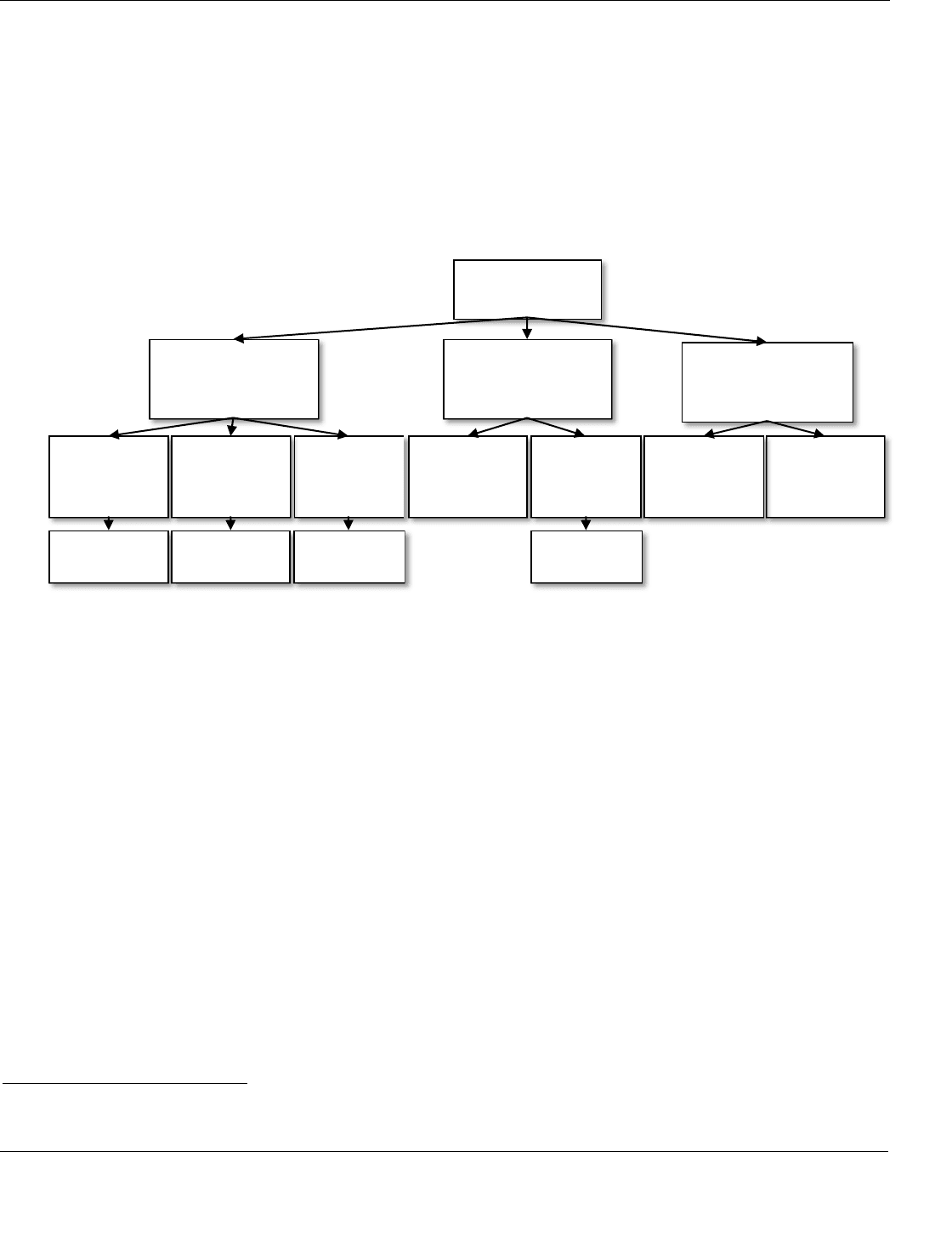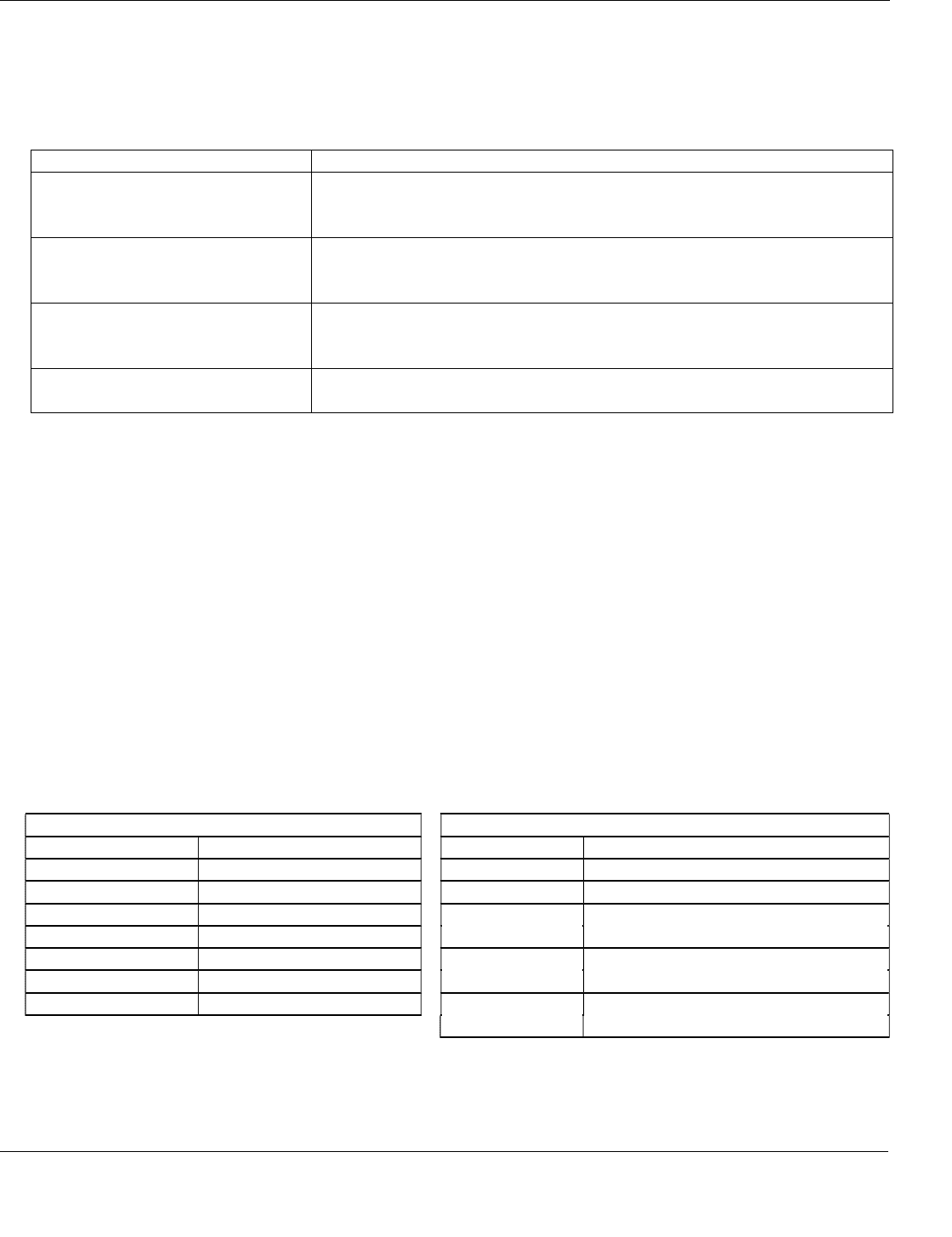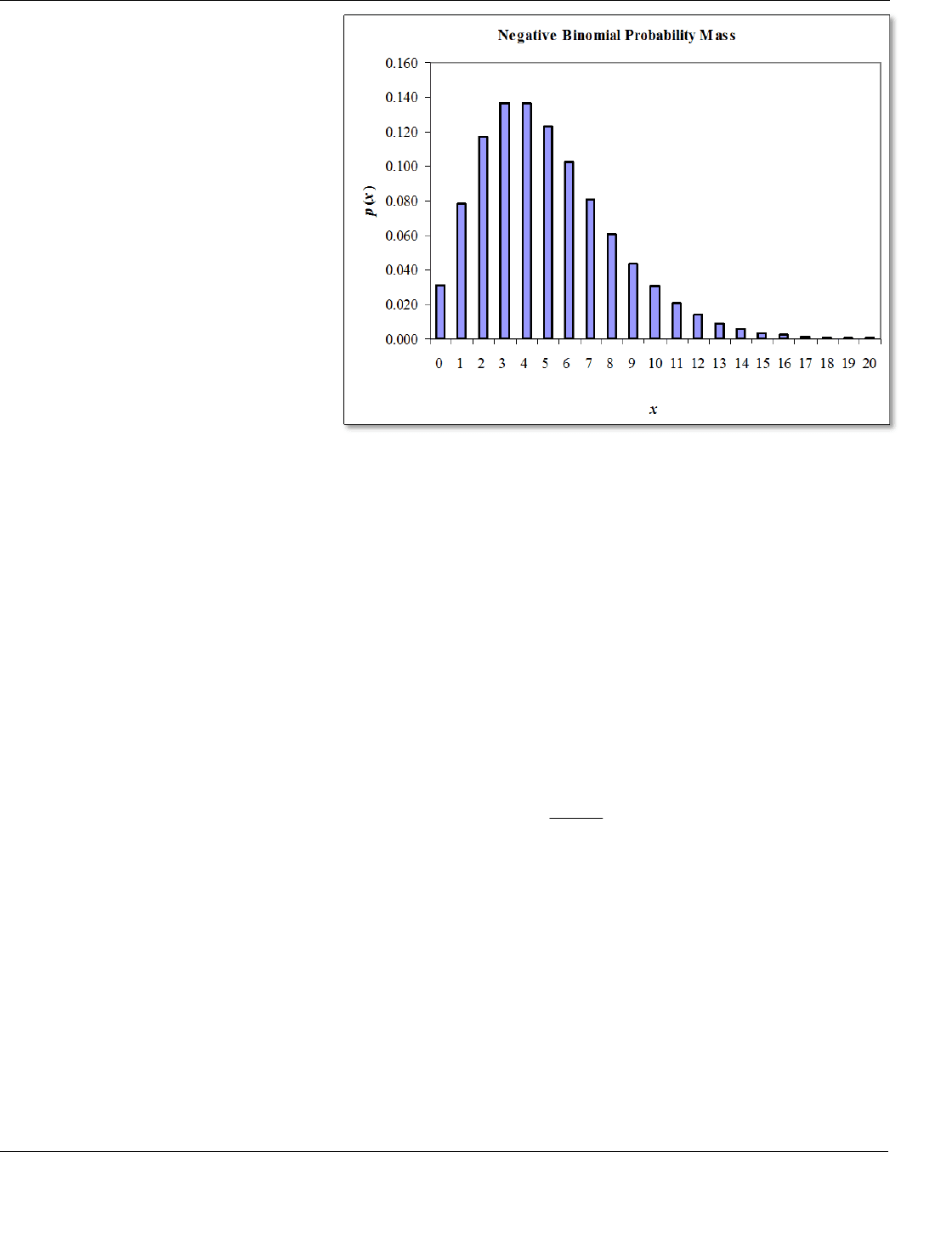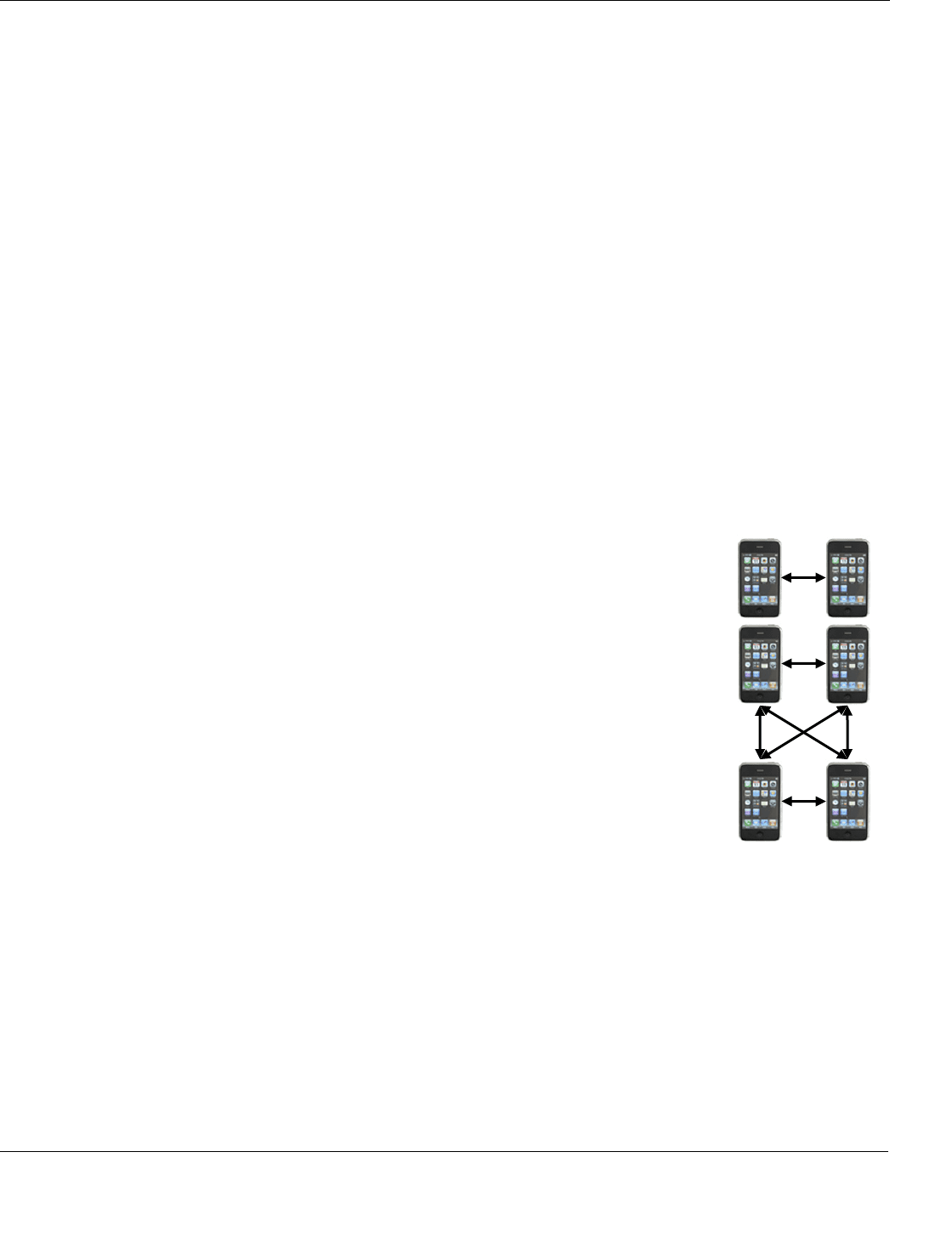Hill A.V. The Encyclopedia of Operations Management: A Field Manual and Glossary of Operations Management Terms and Concepts
Подождите немного. Документ загружается.


ptg6843605
Minto Pyramid Principle
–
mission statement
The Encyclopedia of Operations Management Page 226
Minto Pyramid Principle – A structured approach to building a persuasive argument and presentation developed
by Barbara Minto (1996), a former McKinsey consultant.
The Minto Pyramid Principle developed by Barbara Minto (1996) can improve almost any presentation or
persuasive speech. Minto’s main idea is that arguments should be presented in a pyramid structure, starting with
the fundamental question (or hypothesis) at the top and cascading down the pyramid, with arguments at one level
supported by arguments at the next level down. At each level, the author asks, “How can I support this
argument?” and “How do I know that this is true?” The presentation covers all the arguments at one level, and
then moves down to the next level to further develop the argument.
For example, a firm is considering moving manufacturing operations to China. (See the figure below.) At
the top of the pyramid is the hypothesis, “We should move part of our manufacturing to China.”
From this, the team doing the analysis and making the presentation asks, “Why is it a good idea to move to
China?” The answer comes at the next level with three answers: (1) We will have lower labor cost in China, (2)
we can better serve our customers in Asia, and (3) locating in China will eventually open new markets for the
company’s products in China. The team then asks “Why?” for each of these three items and breaks these out in
more detail at the next level. The “enable us to lower our direct labor cost” argument is fully developed before
the “better able to serve our customers in Asia” is started.
Minto recommends that the presentation start with an opening statement of the thesis, which consists of a
factual summary of the current situation, a complicating factor or uncertainty that the audience cares about, and
the explicit or implied question that this factor or uncertainty raises in the audience’s mind and that the
presenter’s thesis answers. The closing consists of a restatement of the main thesis, the key supporting
arguments (usually the second row of the pyramid), and finally an action plan.
See hypothesis, inductive reasoning, issue tree, MECE, story board.
mission statement – A short statement of an organization’s purpose and aspirations, intended to provide direction
and motivation.
Most organizations have a
vision statement
or
mission statement
that is intended to define their purpose
and raison d’être
33
. However, for many organizations, creating a vision or mission statement is a waste of time.
Vision and mission statements are published in the annual report and displayed prominently on the walls, but
they are understood by few, remembered by none, and have almost no impact on anyone’s thinking or behavior.
Yet this does not have to be the case. Vision and mission statements can be powerful tools for aligning and
energizing an entire organization.
33
Raison d’être is a French phrase that means reason to be or justification for existence. This phase is often written in English
as “raison d’etre” without the ê.
Labor cost
in China is
low
We should
move to China
Enable us to lower
our direct labor
cost
Better able to
serve our
customers in Asia
Better able to open
the China market
We have
high labor
cost now
Our labor
cost is
increasing
Better
customer
service
Lower
shipping
cost
Better
support
from gov’t
Closer to
potential
customers
Graphs &
data
Graphs &
data
Graphs &
data
Graphs &
data
Source: Professor Arthur V. Hill
Example of the Minto Pyramid Principle

ptg6843605
mission statement − mission statement
Page 227 The Encyclopedia of Operations Management
Although scholars do not universally agree on the difference between vision and mission statements, most
view the vision statement as the more strategic longer-term view and argue that the mission should be derived
from the vision. A vision statement should be a short, succinct, and inspiring statement of what the organization
intends to become at some point in the future. It is the mental image that describes the organization’s aspirations
for the future without specifying the means to achieve those aspirations. The table below presents examples of
vision statements that have worked and others that probably would not have worked.
Worked Would not work
Put a man on the moon by the end
of the decade
− President John F. Kennedy
To be an aeronautical leader and apply ingenuity and innovation in our
work as we value our taxpayers and government employees.
Put a computer on every desk in
America
− Bill Gates
Be a leader in the field of software development in the American market
by making software that is easy to use. We also will provide a good return
on investment for our shareholders.
Be number one or number two in
every market we compete in.
− Jack Welch, CEO, GE
Be an industry leader by providing quality products to our customers,
using the talents of our employees, and providing above average returns to
our shareholders.
Revolutionize the way people do
financial work. – Intuit (Quicken)
Be a preferred seller of financial software for our customers and provide
superior returns to our investors.
Of course, having a vision, mission, goals, and objectives is not enough. Organizations need to further
define competitive strategies and projects to achieve them. A competitive strategy is a plan of action to achieve a
competitive advantage. Projects are a means of implementing strategies. Projects require goals and objectives,
but also require a project charter, a team, and a schedule. Strategies and projects should be driven by the
organization’s vision and mission. The hoshin planning, Y-tree, and strategy mapping entries present important
concepts on how to translate a strategy into projects and accountability.
The mission statement translates the vision into more concrete and detailed terms. Many organizations also
have values statementS dealing with integrity, concern for people, concern for the environment, etc., where the
values statement defines constraints and guides all other activities. Of course, the leadership must model the
values. Enron’s motto was “Respect, Integrity, Communication and Excellence” and its vision and value
statement declared “We treat others as we would like to be treated ourselves … We do not tolerate abusive or
disrespectful treatment. Ruthlessness, callousness and arrogance don’t belong here” (source:
http://wiki.answers.com, May 8, 2011). However, Enron’s leadership obviously did not live up to it.
Goals and objectives are a means of implementing a vision and mission. Although used interchangeably by
many, most people define goals as longer term and less tangible than objectives. The table below on the left
shows the Kaplan and Norton model (2004), which starts with the mission and then follows with values and
vision. This hierarchy puts mission ahead of values and vision. The table below on the right is a comprehensive
hierarchy developed by this author that synthesizes many models.
In conclusion, vision and mission statements can be powerful tools to define the organization’s desired end
state and to energize the organization to make the vision and mission a reality. To be successful, these
statements need to be clear, succinct, passionate, shared, and lived out by the organization’s leaders. They
Kaplan and Norton hierarchy Comprehensive hierarchy
Mission Why we exist. Values Our core beliefs that guide all that we do.
Core values What is important to us.
Vision What we want to become in the future.
Vision What we want to be.
Mission What we want to achieve with our vision.
Strategy Our game plan. Strategies How we will achieve our mission with
clearly defined goals.
Strategy map Translate the strategy.
Balanced scorecard Measure and focus.
Projects &
priorities
How we implement strategies with
clearly defined objectives.
Target and initiatives What we need to do.
Personal objectives What I need to do.
Alignment How individuals and departments will
contribute to our mission.
Source: Kaplan & Norton (2004), p. 33.
Source: Professor Arthur V. Hill

ptg6843605
mistake proofing – moment of truth
The Encyclopedia of Operations Management Page 228
should be supported by a strong set of values that are also lived out by the leadership. Lastly, the vision and
mission need to be supported by focused strategies, which are implemented through people and projects aligned
with the strategies and mission.
See Balanced Scorecard, forming-storming-norming-performing model, hoshin planning, SMART goals,
strategy map, true north, Y-tree.
mistake proofing – See error proofing.
mix flexibility – See flexibility.
mixed integer programming (MIP) – A type of linear programming where some decision variables are
restricted to integer values and some are continuous; also called mixed integer linear programming.
See integer programming (IP), linear programming (LP), operations research (OR).
mixed model assembly – The practice of assembling multiple products in small batches in a single process.
For example, a firm assembled two products (A and B) on one assembly line and used large batches to
reduce changeover time with sequence AAAAAAAAAAAAAAABBBBBBBBBBBBBB. However, the firm
was able to reduce changeover time and cost, which enabled it to economically implement mixed model
assembly with sequence ABABABABABABABABABABABABABABA.
The advantages of mixed model assembly over the large batch assembly are that it (1) reduces inventory, (2)
improves service levels, (3) smoothes the production rate, and (4) enables early detection of defects. Its primary
disadvantage is that it requires frequent changeovers, which can add complexity and cost.
See assembly line, early detection, facility layout, heijunka, manufacturing processes, service level, setup
time reduction methods.
mizusumashi – See water spider.
mode – (1) In a statistics context: The most common value in a set of values. (2) In a transportation context: The
method of transportation for cargo or people (e.g., rail, road, water, or air).
In the statistics context, the mode is a measure of central tendency. For a discrete distribution, the mode is
the value where the probability mass function is at its maximum value. In other words, the mode is the value that
has the highest probability. For a continuous probability distribution, the mode is the value where the density
function is at its maximum value. However, the modal value may not be unique. For symmetrical distributions,
such as the normal distribution, the mean, median, and mode are identical.
In the transportation context, the mode is a type of carrier (e.g., rail, road, water, air). Water transport can be
further broken into barge, boat, ship, ferry, or sailboat and can be on a sea, ocean, lake, canal, or river.
Intermodal shipments use two or more modes to move from origin to destination.
See intermodal shipments, logistics, mean, median, multi-modal shipments, skewness.
modular design (modularity) – Organizing a complex system as a set of distinct components that can be
developed independently and then “plugged” together.
The effectiveness of the modular design depends on the manner in which systems are divided into
components and the mechanisms used to plug components together. Modularity is a general systems concept and
is a continuum describing the degree to which a system’s components can be separated and recombined. It refers
to the tightness of coupling between components and the degree to which the “rules” of the system architecture
enable (or prohibit) the mixing and matching of components. Because all systems are characterized by some
degree of coupling between components and very few systems have components that are completely inseparable
and cannot be recombined, almost all systems are modular to some degree (Schilling 2000).
See agile manufacturing, commonality, interoperability, mass customization.
modularity – See modular design.
mold – A hollow cavity used to make products in a desired shape.
See foundry, manufacturing processes, tooling.
moment of truth – A critical or decisive time on which much depends; in the service quality context, an event that
exposes a firm’s authenticity to its customers or employees.
A moment of truth is an opportunity for the firm’s customers (or employees) to find out the truth about the
firm’s character. In other words, it is a time for customers or employees to find out “who we really are.” This is
a chance for employees (or bosses) to show the customers (or employees) that they really do care about them and

ptg6843605
Monte Carlo simulation − MRP
Page 229 The Encyclopedia of Operations Management
to ask customers (or employees) for feedback on how products and services might be improved. These are
special moments and should be managed carefully.
When creating a process map, it is important to highlight the process steps that “touch” the customer. A
careful analysis of a typical service process often uncovers many more moments of truth than management truly
appreciates. Such moments might include a customer phone call regarding a billing problem, a billing statement,
and an impression from an advertisement.
People tend to remember their first experience (primacy) and last experience (recency) with a service
provider. It is important, therefore, to manage these important moments of truth with great care.
The book Authenticity (Pine & Gillmore 2007) argues that in a world increasingly filled with deliberately
staged experiences and manipulative business practices (e.g., frequent flyer programs), consumers often make
buying decisions based on their perception of the honesty, integrity, and transparency of a service provider. This
definition of authenticity is closely related to the concept of a moment of truth.
See primacy effect, service blueprinting, service management, service quality.
Monte Carlo simulation – See simulation.
Moore’s Law – A prediction made by Intel cofounder Dr. Gordon E. Moore in 1965 stating that the number of
components on an integrated circuit will double every 12 months (or 18 months or 24 months).
In 1975, Moore revised his 12 months to 24 months. Other people have revised the law to the widely quoted
number of 18 months, which is an average of the 12 and 24 months. Moore’s Law is really not a “law.” It is
simply an empirical observation that the number of components on a circuit was growing at an exponential rate.
Moore was not the first person to make this kind of observation. In 1751, Benjamin Franklin noted in his
essay “Observations Concerning the Increase of Mankind, Peopling of Countries, etc.,” that “This million
doubling, suppose but once in 25 years, will, in another century, be more than the people of England, and the
greatest number of Englishmen will be on this side of the water.”
Moore’s Law is an exponential growth model of a continuous variable that can be applied to many fast-
growth contexts, such as millions of instructions per second (MIPS) for the fastest computer, the number of
Internet users, and the mosquito population in Minnesota.
The mathematical model for exponential growth is identical to the exponential decay half-life “time-based
learning” model, and both use the form
( )
bt
y t ae
. Unlike the learning curve model that has discrete time
periods, the exponential growth (or decay) model is expressed in continuous time. Whereas the performance
variable for exponential growth doubles every h time periods, the performance variable for the half-life curve
“halves” every h time periods. The constants for both models are a = y(0), b = ln(2)/h, and h = ln(2)/b, but the
signs for b and h are opposite those of the half-life model.
See green manufacturing, half-life curve, learning curve, learning organization.
moving average – An average over the last n periods often used as a short-term forecast; also called a rolling
average, rolling mean, or running average.
The moving average can be used to make forecasts based on the most recent data. It can also be used to
smooth data for graphing purposes.
An n-period moving average is the arithmetic average of the last n periods of a time series. For a time series
(d
1
, d
2
, …, d
T
), the moving average is
1
/
T
t
t T n
d n
. In other words, a moving average is a weighted average with
equal weights that sum to one for the last n periods and zero weights for all values more than n periods old.
An exponentially smoothed average (sometimes called an exponential moving average) is like a moving
average in that it is also a weighted average and an average of the recent data for a time series. Whereas a
moving average uses equal weights for the last n periods and zero weights for all values more than n periods old,
an exponentially smoothed average uses weights that decline geometrically with the age of the data. When the
demand is stationary, an n-period moving average can be proven to have the same expected value as a simple
exponential smoothed average with smoothing constant 2/( 1)n
.
See Box-Jenkins forecasting, centered moving average, exponential smoothing, forecasting, time series
forecasting, weighted average.

ptg6843605
MPS
–
Murphy’s Law
The Encyclopedia of Operations Management Page 230
MPS – See Master Production Schedule.
MRB – See Material Review Board.
MRO – See Maintenance-Repair-Operations (MRO).
MRP – See Materials Requirements Planning (MRP).
MTBF – See Mean Time Between Failure (MTBF).
MTM (Methods Time Measurement) – See work measurement.
MTO – See make to order (MTO).
MTS – See make to stock (MTS).
MTTR – See Mean Time to Repair (MTTR).
muda – A Japanese word for waste used to describe any activity that does not add value.
In conversational Japanese, “muda” means useless, futile, or waste. In popular lean manufacturing
terminology, muda is any type of waste. All eight of the “8 wastes” are examples of muda: over-production,
waiting, conveyance, processing, inventory, motion, correction, and wasted human potential.
According to the Lean Enterprise Institute, “muda,” “mura,” and “muri” are three Japanese terms often used
together in the Toyota Production System to describe wasteful practices that should be eliminated.
Muda
(Non-value-added) – Any activity that consumes resources without creating value for the customer.
Mura
(Imbalance) – Unevenness in an operation; for example, an uneven work pace in an operation causing
operators to hurry and then wait.
Muri
(Overload) – Overburdening or causing strain on equipment or operators.
See 8 wastes, error proofing, lean thinking, Toyota Production System (TPS).
multi-modal shipments – Moving goods using two or more modes of transportation; also called multi-modal
transport.
An example is a container picked up from the shipper by truck, loaded onto the rail, shipped by rail to a port,
and then loaded onto a vessel. Multi-modal shipments help optimize supply chain efficiency, but can make
tracking difficult because of the need for coordination between the modes.
See intermodal shipments, logistics, mode, shipping container.
multiple source – See single source.
multiple-machine handling – The practice of assigning workers to operate more than one machine at a time.
This is a common Japanese manufacturing practice that is made possible by the application of jidoka and
error proofing principles.
Chaku-Chaku
is an application of this principle.
See Chaku-Chaku, error proofing, jidoka.
multiplication principle – Investing strategically in process improvements that can be “multiplied” (i.e., used)
over many transactions.
Love (1979) challenged people to invest time and money to improve processes, particularly when a one-time
investment can be multiplied over many transactions. Good examples include creating checklists, writing
standard operating procedures, reducing setup time, automating a process, creating a standard legal paragraph,
and applying 5S. The multiplication principle suggests that organizations should focus their process
improvement efforts on those repetitive activities that cost the most.
See 5S, addition principle, automation, checklist, human resources, job design, lean thinking, setup time
reduction methods, subtraction principle.
mura – See muda.
muri – See muda.
Murphy’s Law – A humorous and pessimistic popular adage often stated as, “If anything can go wrong, it will” or
“Anything that can go wrong will go wrong.”
Murphy’s Law is similar to the
Second Law of Thermodynamics
(sometimes called the law of entropy),
which asserts that all systems move to the highest state of disorder (the lowest possible state of energy) and tend
to stay there unless energy is supplied to restore them. O’Toole’s commentary on Murphy’s Law is “Murphy
was an optimist.” The website http://userpage.chemie.fu-berlin.de/diverse/murphy/murphy2.html (April 1, 2011)
offers many similar types of “laws.”
See error proofing, Parkinson’s Laws, project management.

ptg6843605
NAFTA − negative binomial distribution
Page 231 The Encyclopedia of Operations Management
N
NAFTA – See North American Free Trade Agreement (NAFTA).
nanotechnology – The study of the control of materials on an atomic or molecular scale; also called nanotech.
“Nano” means a billionth. A nanometer is one-billionth of a meter. Nanotechnology generally deals with
structures of the size of 100 nanometers or smaller.
See disruptive technology.
NAPM (National Association of Purchasing Management) – See Institute for Supply Management (ISM).
National Association of Purchasing Management (NAPM) – See Institute for Supply Management (ISM).
NC machine –See Numerically Controlled (NC) machine.
near miss – See adverse event.
nearshoring – The practice of moving work to a neighboring country; also called near shore outsourcing.
U.S. firms nearshore to Canada and Mexico as well to Central and South America and the Caribbean. Firms
in Western Europe nearshore to central and Eastern Europe. Whereas offshoring means to move work to any
other country (possibly across an ocean), nearshoring means to move work to another country in the same region.
The term “nearshoring” often implies outsourcing to another firm, but technically, it is possible for a firm to
nearshore to a plant owned by the firm in another nearby country. The advantages of keeping the work in a
nearby region can include better communication (particularly if the countries share the same language), better
cultural understanding (leading to trust), less travel distance (leading to reduced cost and more frequent visits and
tighter controls), and fewer time zones (leading to easier and more frequent communication).
See offshoring, outsourcing, sourcing.
necessary waste – See 8 wastes.
negative binomial distribution – A discrete probability distribution that counts the number of successes (or
failures) in a sequence of independent Bernoulli trials (each with probability of success p) before the r-th failure
(or success); also known as the Pascal distribution, Pólya distribution, and gamma-Poisson distribution.
The negative binomial is the discrete analog to the gamma distribution and therefore can take on many
shapes. Like the gamma and Poisson, the negative binomial is only defined for non-negative values (i.e., x ≥ 0).
The Poisson distribution is the most commonly used discrete probability distribution in inventory theory, but
has only one parameter and is only appropriate when the mean and variance are approximately equal. The
negative binomial distribution is a good alternative to the Poisson when the data is “dispersed” (i.e., σ
2
> μ).
Parameters: r > 0 is the number of failures and p is the probability of success on each experiment.
Probability mass and cumulative distribution functions:
1
( ) (1 )
1
r x
x r
p
x p p
r
, where x is a non-
negative integer, p is a probability, and r is an integer for the Pascal version but can be any real positive number
for the Pólya version. For the Pólya version with non-integer r,
( )
( ) (1 )
! ( )
r x
r x
p x p p
x r
, where (.)
is the
gamma function. Note that this distribution can be parameterized in many ways, so care must be taken to not
confuse them. The CDF has no closed form, but can be written as ( )
( ; , 1)F x I p r x
, where ( ; , 1)I p r x
is
the regularized beta function. (See the beta function entry for more information.)
Statistics: Range x
{0, 1, 2, … }, mean (1 ) /r p p
, variance
2 2
/(1 ) /(1 )rp p p
, and
mode
( 1) / (1 )r p p
if r > 1; 0 otherwise.
Graph: The graph below is the negative binomial probability mass function with r = 5 trials of a fair coin
(p = 0.5).

ptg6843605
negative exponential distribution
–
Net Promoter Score (NPS)
The Encyclopedia of Operations Management Page 232
Parameter estimation:
The
method of moments parameters are
2
1 /p
and (1 ) /r p p
.
Many authors recommend a Maximum
Likelihood Estimator (MLE) approach
over the method of moments
estimators.
Excel:
In Excel, the probability
mass function is NEGBINOMDIST(x,
r, p) and is interpreted as the
probability of x failures before the r-th
success when the probability of a
success on any one trial is p.
Excel simulation:
An Excel
simulation can use the inverse
transform method to generate negative
binomial random variates using a direct
search for the inverse cumulative CDF
function.
Relationships to other distributions:
The geometric distribution is a special case of the negative binomial
distribution for r = 1. The sum of r independent geometric(p) random variables is a negative binomial (r, p)
random variable. The sum of n negative binomial random variables with parameters (r
i
, p) is a negative binomial
with parameters (Σr
i
, p). The negative binomial converges to the Poisson as r approaches infinity, p approaches
1, and μ is held constant. The Pascal distribution (after Blaise Pascal) and Pólya distribution (after George Pólya)
are special cases of the negative binomial. The convention among statisticians and engineers is to use the
negative binomial (or Pascal) with an integer-valued r and use Pólya with a real-valued r. The Pólya distribution
more accurately models occurrences of “contagious” discrete events, such as tornado outbreaks, than does the
Poisson distribution.
See Bernoulli distribution, beta function, gamma distribution, Poisson distribution, probability distribution,
probability mass function.
negative exponential distribution – See exponential distribution.
net change MRP – See Materials Requirements Planning (MRP).
Net Present Value (NPV) – The future stream of benefits and costs converted into equivalent values today.
The NPV is calculated by assigning monetary values to benefits and costs, discounting future benefits and
costs using an appropriate discount rate, and subtracting the sum total of discounted costs from the sum total of
discounted benefits. Mathematically, NPV is defined as
0
1
(1 )
n
t
t
t
C
NPV C
r
, where t is the time period, n is
the number of periods, r is the discount rate, C
t
is the net cash flow in period t, and C
0
is the initial cash outlay.
See financial performance metrics.
Net Promoter Score (NPS) – A simple but useful loyalty metric based on customers’ willingness to recommend.
The Net Promoter Score (NPS) is a relatively new
loyalty
metric developed by Frederick Reichheld (2003).
It is derived from the “willingness to recommend metric,” which is a survey instrument with the single item
(question), “How likely is it that you would recommend us to a friend or colleague?”
Customers are asked to respond using a 0-10
Likert rating scale
with 0 anchored on the extreme negative
end and 10 on the extreme positive end. Customers are then divided into three categories: (1) promoters (9 or
10) are loyal enthusiasts who keep buying from a company and urge their friends to do the same; (2) passives (7
or 8) are satisfied but unenthusiastic customers who can be easily wooed by the competition; and (3) detractors (0
to 6) are unhappy customers. The NPS is the percentage of promoters minus the percentage of detractors.
Reichheld (2003) compared the NPS to a financial net worth that takes the assets minus the liabilities, where the
assets are the promoters and the liabilities are the detractors.

ptg6843605
net requirements
−
network effect
Page 233 The Encyclopedia of Operations Management
Reichheld (2003) claims that the NPS is the single best predictor of customer loyalty. He argues that the
NPS is highly correlated with growth rates and that it is the single most reliable indicator of a company’s ability
to grow. The consulting firm Satmetrix offered a short white paper on this subject found at
www.satmetrix.com/pdfs/NetPromoterWPfinal.pdf, May 16, 2011.
Dixon, Freeman, and Toman (2010) claim that the
Customer Effort Score (CES)
is more predictive of
customer loyalty in a call center context than either the NPS or customer satisfaction.
Hill, Hays, and Naveh (2000) develop a concept similar to the NPS based on an economic model showing
that loyalty is related to the ratio (not the difference) of satisfied and dissatisfied customers; i.e.,
/(1 )
s s
,
where
s
is the percent satisfied. This suggests that loyalty might be a function of the ratio
/
p d
, where
p
is the percent promoters and
d
the percent detractors, rather than the difference
p d
. This concept has
not yet been tested empirically.
See Customer Effort Score (CES), operations performance metrics, service management, service quality.
net requirements – The number of units still needed to satisfy the materials plan in a Materials Requirements
Planning (MRP) system.
In the MRP planning process, the net requirement is calculated as the gross requirements (units needed by
higher-level items) plus allocations (units already promised to an order), less on-hand inventory (units that are
available now), less open orders (scheduled receipts that will soon be available), less safety stock (desired
number of units on-hand at all times).
See Materials Requirements Planning (MRP), open order.
net weight – (1) In a packaging context: The weight of a product without packaging. (2) In a shipping/logistics
context: The weight of a vehicle without its fuel, cargo, personnel, pallets, containers, or straps.
See gross weight, logistics, tare weight.
network effect – An economics term that describes a situation where the value of a product
or service increases with the number of adopters, thereby encouraging an increasing
number of adopters; also called a network externality.
The network effect can be illustrated with cell phones. If the world had only one cell
phone that used a particular communication technology, it would be of no value. However,
this cell phone would become much more valuable if two of them existed, even more
valuable if four of them existed, and far more valuable if nearly everyone had one.
Economists call this a
network externality
because when new consumers join the
network, they have a beneficial external impact on consumers already in the network. The
network effect produces a self-reinforcing cycle, with more buyers attracting more buyers.
Metcalfe’s Law
states, “The value of a telecommunications network is proportional to
the square of the number of users of the system (n²)” (Shapiro & Varian 1999). Metcalfe’s
Law explains many of the network effects of communication technologies and networks,
such as the Internet, social networking, and Wikipedia. It is related to the fact that the
number of unique connections in a network with n nodes is n(n – 1)/2. Briscoe, Odlyzko,
and Tilly (2006) argues that Metcalfe’s Law is wrong and proposes n log(n) as an alternative growth model.
With both models, the value of the network grows faster than a linear growth rate. If cost grows linearly with n
and value grows faster than linear, the value will eventually exceed the cost.
The network effect is enabled by the
interoperability
of the network. The network effect is often the result
of
word-of-mouth testimonials
. In other words, people may adopt a service because “everyone” uses it. Over
time, positive network effects can create a “bandwagon effect” as the network becomes more valuable. This is
related to the
Bass Model
.
The expression network effect nearly always refers to
positive network externalities
, as in the case of the
telephone.
Negative network externalities
can also occur where more adopters make a product less valuable.
This is sometimes referred to as “congestion,” as in automobile congestion on the road.

ptg6843605
network optimization – New Product Development (NPD)
The Encyclopedia of Operations Management Page 234
With economy of scale, the supply side of a business becomes more efficient as it grows. With the network
effect, the demand side of a business becomes more valuable as it grows. The network effect, therefore, is
essentially a demand side economy of scale.
See Bass Model, economy of scale, interoperability.
network optimization – An operations research term for an efficient approach for modeling and solving a class of
linear programming problems.
Many problems can be modeled as a network optimization problem, including the assignment problem, the
transportation problem, and the transshipment problem. Most network optimization problems can be represented
by a set of notes with arrows connecting them (a directed graph). The user must define the minimum flow,
maximum flow, and cost per unit flow that can pass along each arc in the network. The fundamental rule is
conservation of flow, which states simply that the flow coming into a node must equal the flow going out of a
node. Only one type of commodity (product) can be modeled. More general methods, such as linear and integer
programming, can handle multiple commodity flows.
The Ford and Fulkerson “out-of-kilter” algorithm is the most famous approach for solving this problem, but
primal network algorithms are much more efficient. Several variants of the Ford and Fulkerson algorithm are
available in the public domain and are efficient enough to handle many practical problems.
See algorithm, assignment problem, linear programming (LP), operations research (OR), optimization,
transportation problem, transshipment problem.
neural network – A computer program that can “learn” over time; often called an “artificial neural network.”
A neural network is a program that creates a computer network designed to function in a similar way to
natural neural structures, such as a human brain. They can be used to model complex relationships between
inputs and outputs or to find patterns in data. Neural networks are sometimes used in data mining applications to
try to find relationships between inputs and outputs.
For example, neural networks might be helpful in identifying which customers have high credit risk based on
history with other customers. In another example, a neural network approach was used at the University of
Minnesota to try to identify how much of a particular polymer was found in a microscopic digitized photo. The
program was “trained” by hundreds of photos that had many variables describing each pixel in the photo. Over
time, the neural net program was able to develop a simple set of decision rules that could be used to correctly
classify future pixels most of the time.
See Artificial Intelligence (AI), data mining.
never event – See sentinel event.
New Product Development (NPD) – The process of generating new product and service concepts, creating
designs, and bringing new products and services to market; also called product development.
The NPD process is often divided into three steps:
The fuzzy front end – The activities that generate and select concepts to be started into product
development. Organizations should only start concepts that have a high probability of financial success.
New product development – The process of translating product concepts into specific designs that can be
manufactured and brought to market.
Commercialization – The process of managing a new product through pilot production, production ramp-
up, and product launch into the channels of distribution.
One of the key issues for NPD is forming the NPD project team. The following four tables compare the
NPD team structure for four types of organizations: functional, lightweight, heavyweight, and autonomous. A
good reference on this subject is Clark and Wheelwright (1992).
Functional
Description • Members are grouped by discipline.
• Entire project is divided into independent functional responsibilities.
Advantages • Good means of evaluating functional performance.
• Functional managers bring experience and knowledge.
Disadvantages • Project tends to move sequentially through functional areas
• No one directly involved in the project is responsible for results.
Best when • Deep expertise is available.

ptg6843605
new product flexibility − newsvendor model
Page 235 The Encyclopedia of Operations Management
Lightweight
Description • Members still reside in their functional areas and are not dedicated to the team.
• The team depends on the technical functions to get the work accomplished.
• Liaison (middle or junior level manager) coordinates the project committee.
Advantages • Greater coordination and better scheduling
Disadvantages • Speed and coordination advantages are seldom realized.
Best when • The focus is on derivative products.
Heavyweight
Description • Dedicated team leader with large responsibility.
• Team members report to the team leader.
• The core group is co-located with its heavyweight project leader but still has a reporting
relationship with functional bosses.
• Core team “contract.”
Advantages • Focused task objectives.
• Handle cross-functional integration very well.
• Rapid and efficient development of new products and processes.
Disadvantages • May raise conflicts with the functional management.
• Teams want control over secondary activities.
• May inhibit development of deep functional excellence.
• Possibly requires more testing and quality assurance.
Best when • A system solution is required.
Autonomous (sometimes called tiger teams)
Description • Similar to heavyweight team.
• No functional reporting relationships.
Advantages • Few conflicts with functional management.
Disadvantages • Teams want control over secondary activities.
• May inhibit development of deep functional excellence.
• Possibly requires more testing and quality assurance.
Best when • A radical new concept is required.
Product Development and Management Association (PDMA) and the Product Development Institute (PDI)
are two of the leading professional societies for NPD professionals in North America.
The Toyota approach to NPD appears to be quite different from that used in Western Europe and North
America. Morgan and Liker (2006) provided a good overview of the Toyota NPD process.
See absorptive capacity, adoption curve, Analytic Hierarchy Process (AHP), autonomous workgroup,
breadboard, clockspeed, commercialization, Computer Aided Design (CAD), concurrent engineering,
configuration management, Design for Six Sigma (DFSS), disruptive technology, Early Supplier Involvement
(ESI), Fagan Defect-Free Process, flexibility, fuzzy front end, High Performance Work Systems (HPWS),
ideation, Integrated Product Development (IPD), job design, Kano Analysis, lean design, line extension, Mean
Time Between Failure (MTBF), Mean Time to Repair (MTTR), phase review, planned obsolescence, platform
strategy, postponement, process design, Product Data Management (PDM), project charter, project
management, prototype, Pugh Matrix, Quality Function Deployment (QFD), reliability, reverse engineering,
scrum, serviceability, simultaneous engineering, stage-gate process, technology road map, time to market, time
to volume, TRIZ, voice of the customer (VOC), waterfall scheduling.
new product flexibility – See flexibility.
newsvendor model – A mathematical model that solves the newsvendor problem, which is an important problem
where the decision maker must decide how much to purchase given the probability distribution of demand, the
cost of under-buying one unit, and the cost of over-buying one unit; formerly called the newsboy model or the
newsboy problem.
The newsvendor problem appears in many business contexts, such as buying for a one-time selling season,
making a final production run, setting safety stocks, setting target inventory levels, and making capacity
